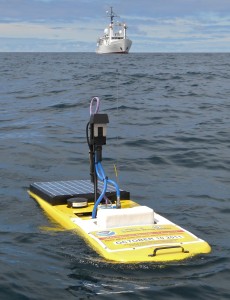The New York Times, October 15th, 2015,
Ocean and coastal waters around the world are beginning to tell a disturbing story. The seas, like a sponge,
 are absorbing increasing amounts of carbon dioxide from the atmosphere, so much so that the chemical balance of our oceans and coastal waters is changing and a growing threat to marine ecosystems. Over the past 200 years, the world’s seas have absorbed more than 150 billion metric tons of carbon from human activities. Currently, that’s a worldwide average of 15 pounds per person a week, enough to fill a coal train long enough to encircle the equator 13 times every year.
are absorbing increasing amounts of carbon dioxide from the atmosphere, so much so that the chemical balance of our oceans and coastal waters is changing and a growing threat to marine ecosystems. Over the past 200 years, the world’s seas have absorbed more than 150 billion metric tons of carbon from human activities. Currently, that’s a worldwide average of 15 pounds per person a week, enough to fill a coal train long enough to encircle the equator 13 times every year.
We can’t see this massive amount of carbon dioxide that’s going into the ocean, but it dissolves in seawater as carbonic acid, changing the water’s chemistry at a rate faster than seen for millions of years. Known as ocean acidification, this process makes it difficult for shellfish, corals and other marine organisms to grow, reproduce and build their shells and skeletons.
About 10 years ago, ocean acidification nearly collapsed the annual $117 million West Coast shellfish industry, which supports more than 3,000 jobs. Ocean currents pushed acidified water into coastal areas, making it difficult for baby oysters to use their limited energy to build protective shells. In effect, the crop was nearly destroyed.
Human health, too, is a major concern. In the laboratory, many harmful algal species produce more toxins and bloom faster in acidified waters. A similar response in the wild could harm people eating contaminated shellfish and sicken, even kill, fish and marine mammals such as sea lions.
Increasing acidity is hitting our waters along with other stressors. The ocean is warming; in many places the oxygen critical to marine life is decreasing; pollution from plastics and other materials is pervasive; and in general we overexploit the resources of the ocean. Each stressor is a problem, but all of them affecting the oceans at one time is cause for great concern. For both the developing and developed world, the implications for food security, economies at all levels, and vital goods and services are immense.
This year, the first nationwide study showing the vulnerability of the $1 billion U.S. shellfish industry to ocean acidification revealed a considerable list of at-risk areas. In addition to the Pacific Northwest, these areas include Long Island Sound, Narragansett Bay, Chesapeake Bay, the Gulf of Mexico, and areas off Maine and Massachusetts. Already at risk are Alaska’s fisheries, which account for nearly 60 percent of the United States commercial fish catch and support more than 100,000 jobs.
Ocean acidification is weakening coral structures in the Caribbean and in cold-water coral reefs found in the deep waters off Scotland and Norway. In the past three decades, the number of living corals covering the Great Barrier Reef has been cut in half, reducing critical habitat for fish and the resilience of the entire reef system. Dramatic change is also apparent in the Arctic, where the frigid waters can hold so much carbon dioxide that nearby shelled creatures can dissolve in the corrosive conditions, affecting food sources for indigenous people, fish, birds and marine mammals. Clear pictures of the magnitude of changes in such remote ocean regions are sparse. To better understand these and other hotspots, more regions must be studied.
Read more here


